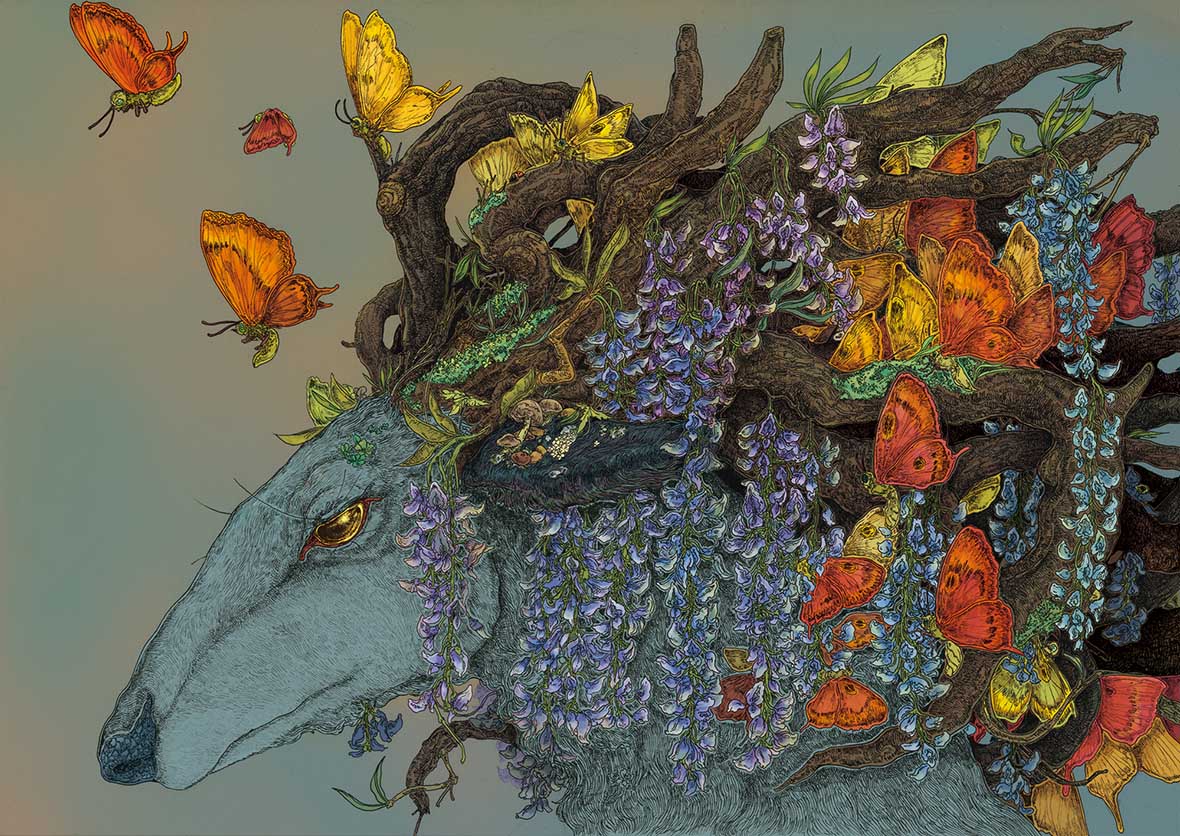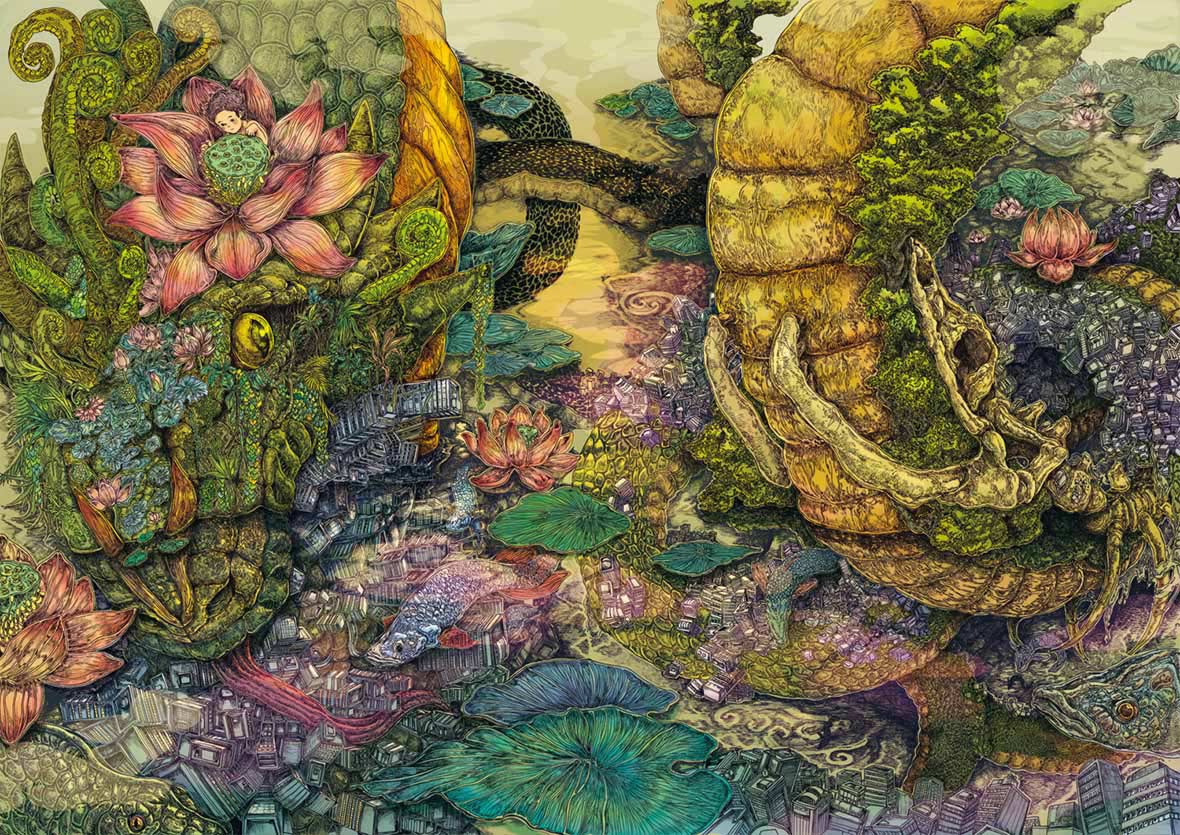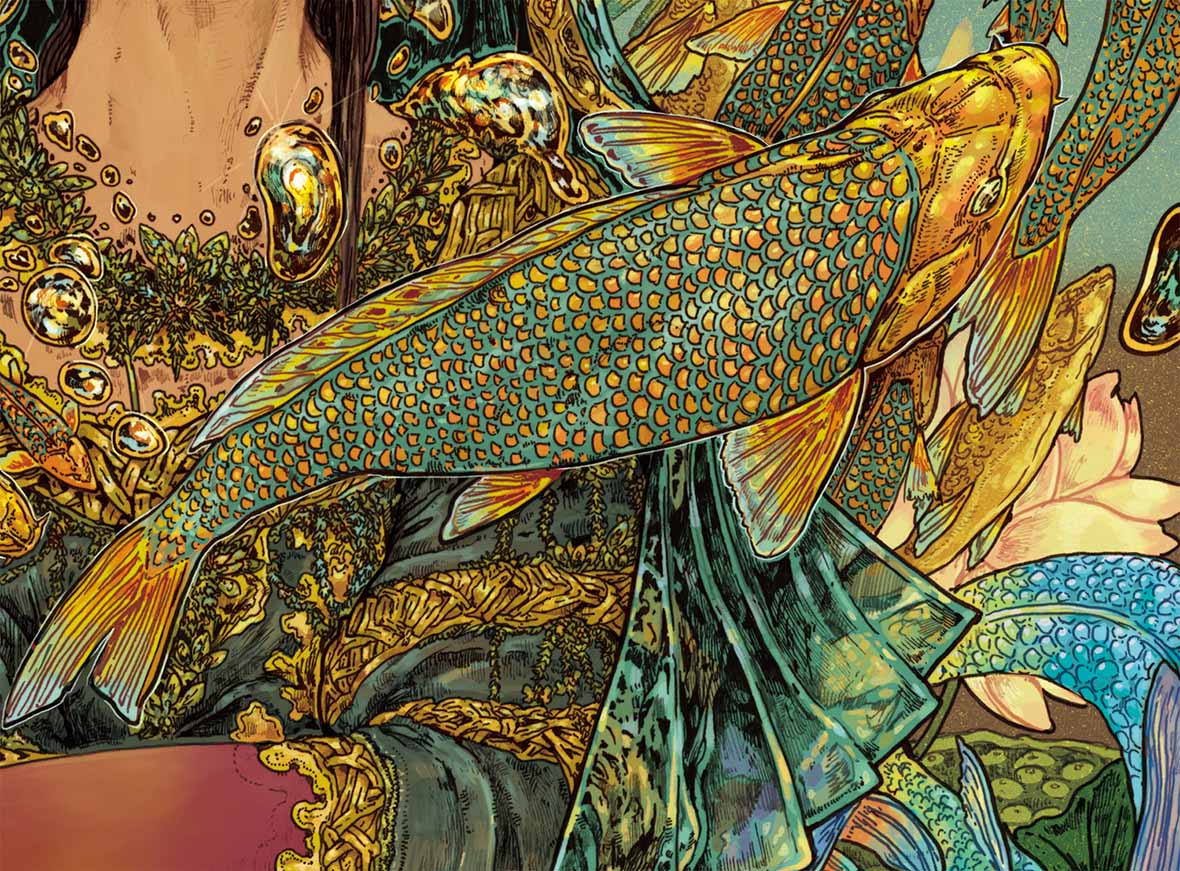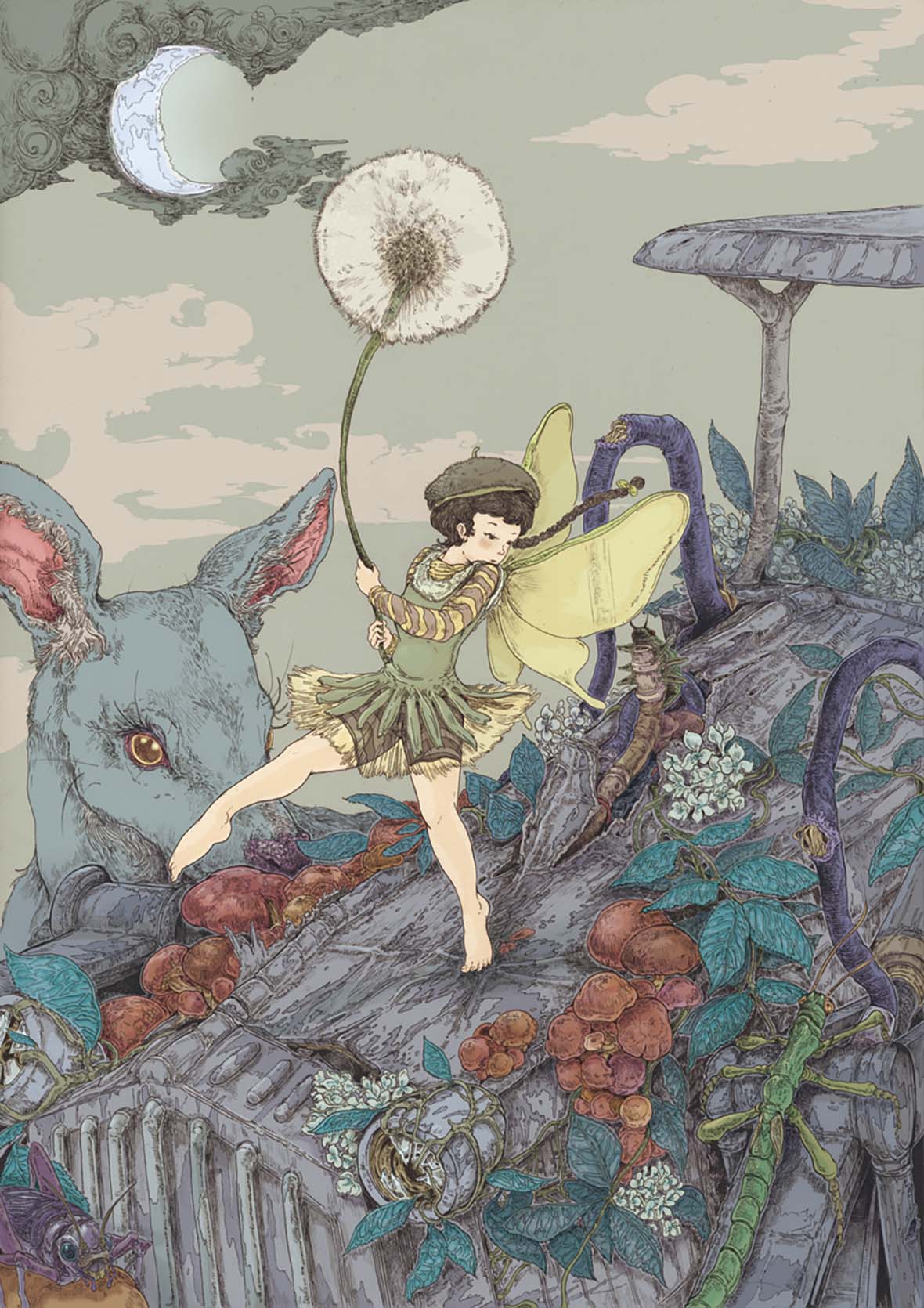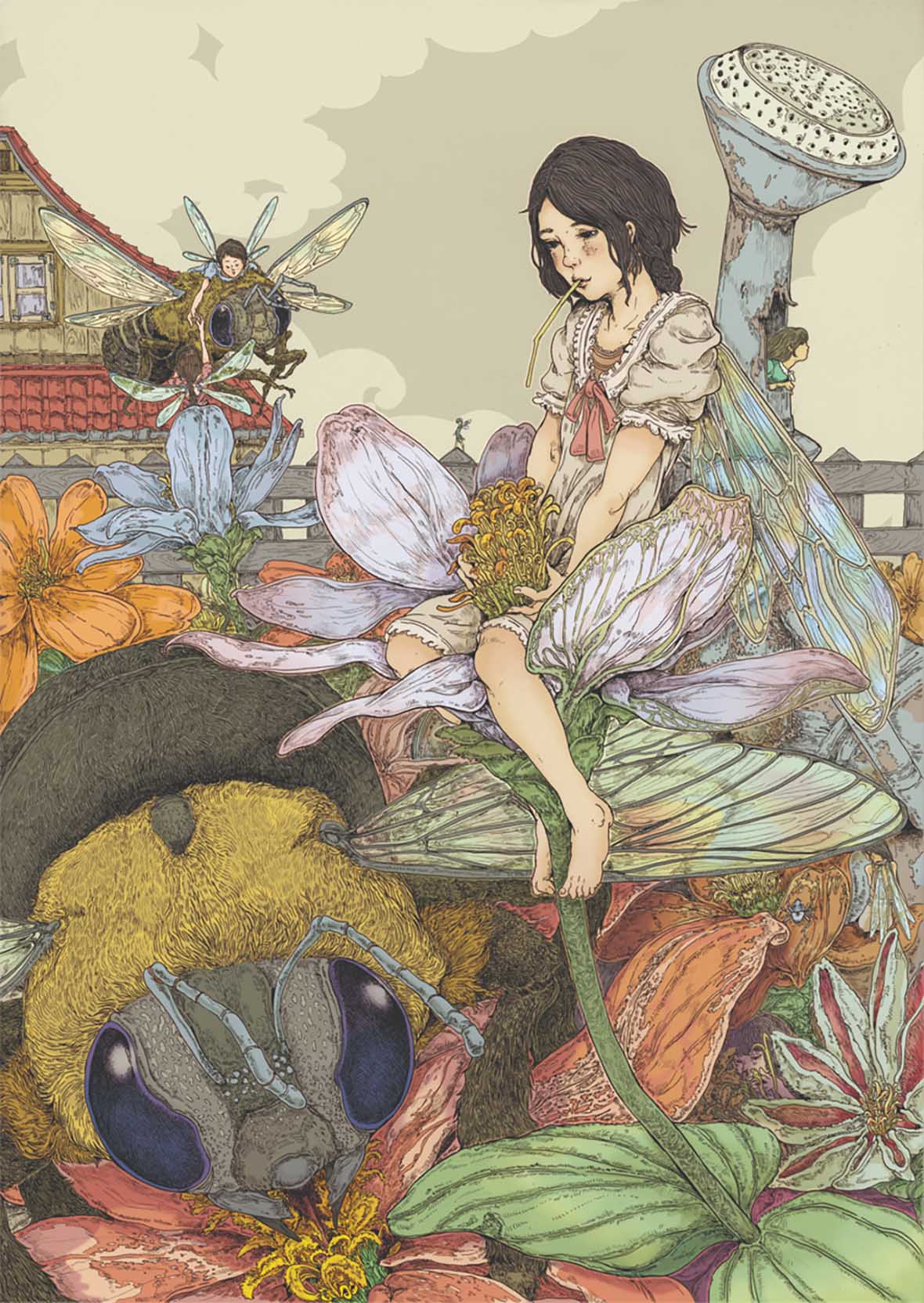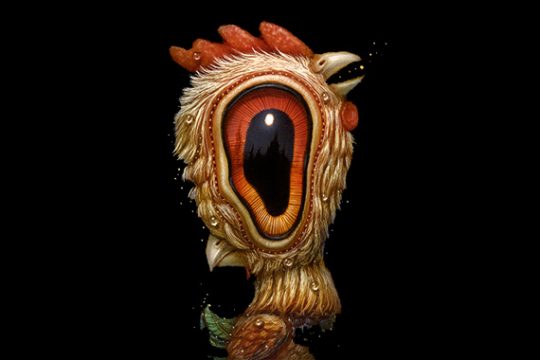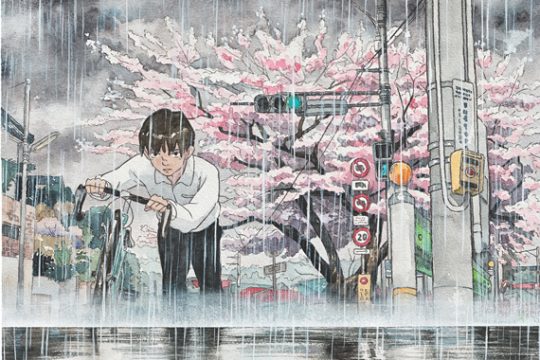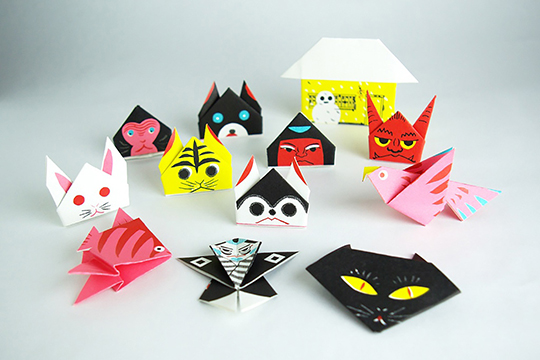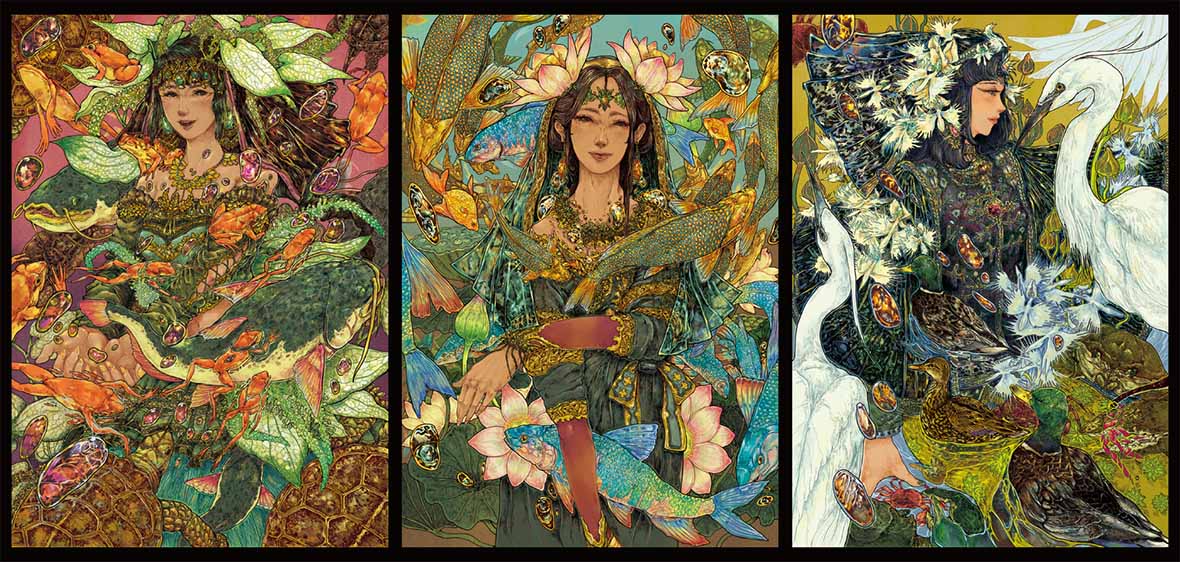
From Kazuki Okuda‘s pen comes a crocodile peeking out among the branches of an ancient tree and a giant graceful dragonfly perched on a girl’s chest. Other illustrations feature golden carp, green frogs, and emerald-headed mallards. We’re far from cities of concrete: this is a story of humans and nature.
Okuda’s works are exquisite and expansive, like a cicada’s delicately veined wings that, though small, create a resounding chorus from high in the trees. His works teem with all sorts of tiny creatures, and viewed from a distance, they form an epic, cinematic composition.
在奥田一生的笔下,鳄鱼的尖吻从古树枝桠中伸出来,巨大又纤巧蜻蜓匍匐在少女的前胸,还有金光鳞鳞的鲤鱼,青蛙、绿头鸭……这不属于钢筋水泥之城,这是自然和人的故事。
他的画,细腻又磅礴。细腻到蝉翼的纹路,都能纤毫毕现;而在声势上却显得宏伟磅礴,绿荫下,古树上,寄居着微小却实在的各种生物,远远看去,简直像是一幅史诗级电影的构图。

这个奥田一生,生于日本奈良县,目前生活在京都,一个“被大自然环抱着,比邻人群之地”。在他眼里,日本是一个神秘的国家,自然和人文交织混合,因而也有一种独特的神学理论,“八百万の神”,即这个神灵 Kami 存在于一切事物里,囊括在自然万物中。“因而在奈良县生活,大自然给我留下的印象是既迷人又恐惧的。” 他说。
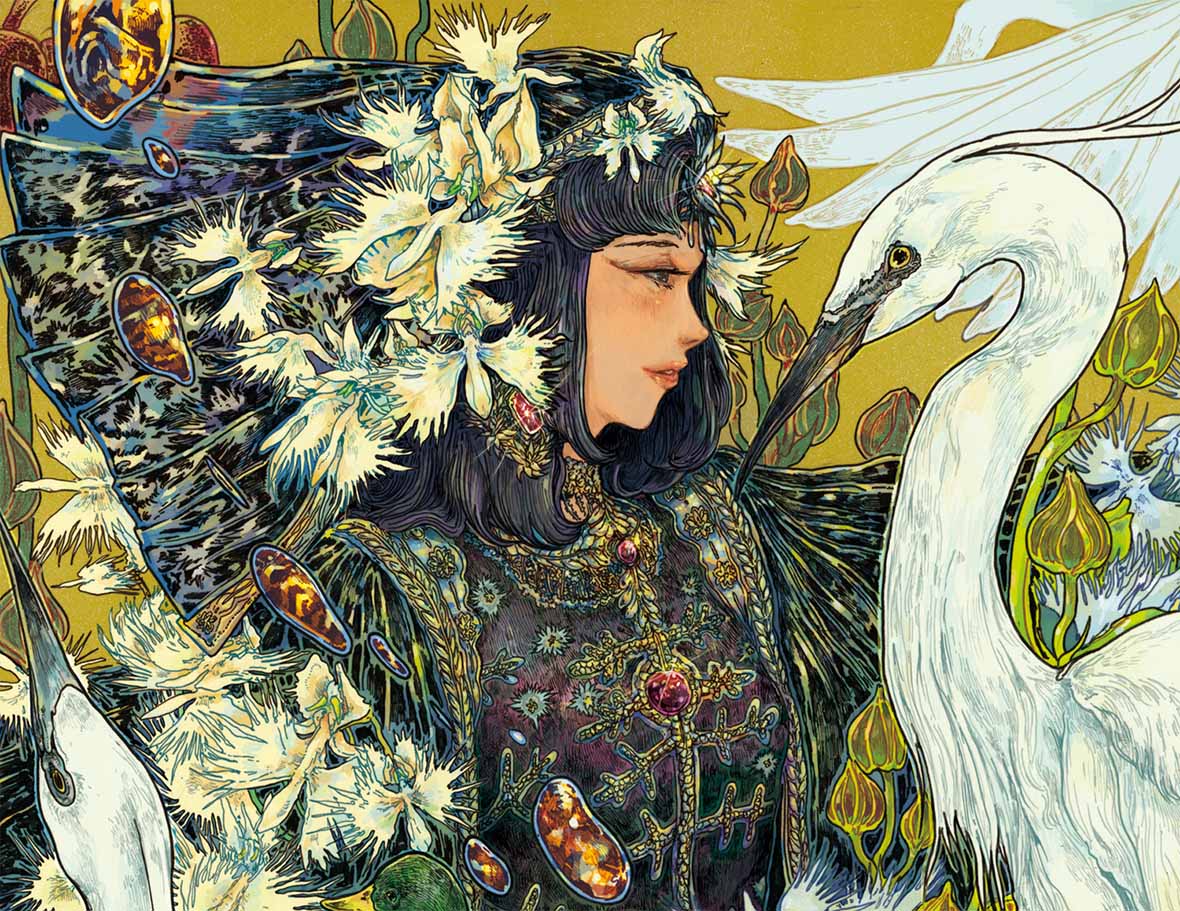
奥田一生的画里常常出现昆虫。这种生物拥有非常复杂的身体结构,但看起来又非常简单。“(我画昆虫)其中很重要的一个原因是它们的视觉呈现。它们又美又让人心生恐惧,这也给了我很多矛盾的情感——昆虫是和人类一样的生命体,但它们融入自然的程度却超过了我们。并且,与我们不同的是,昆虫与出现在神性里的圣灵更相似。所以我借用它们的身形,以表达 Kami 的思想和来自大自然的各种情感。”
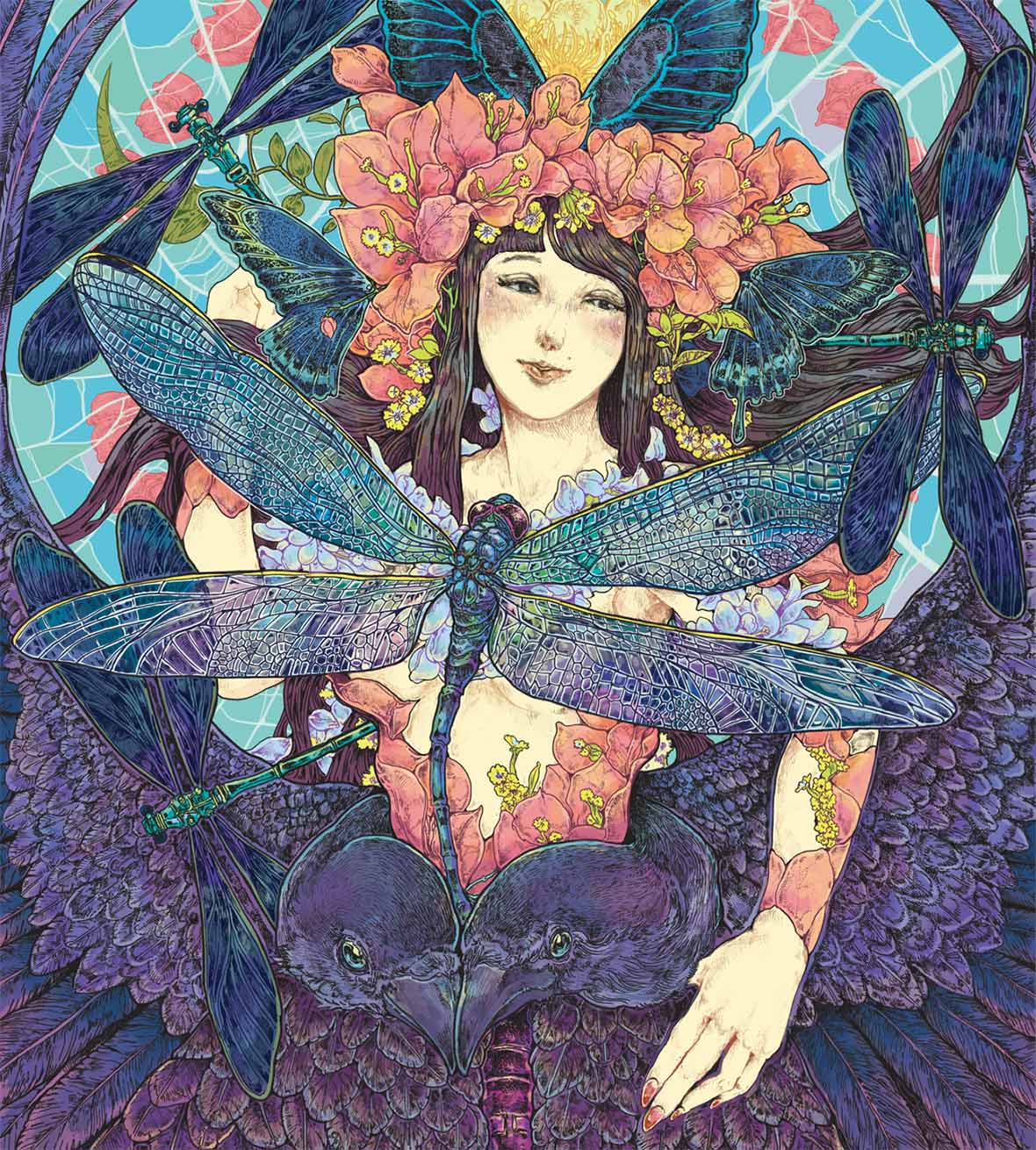
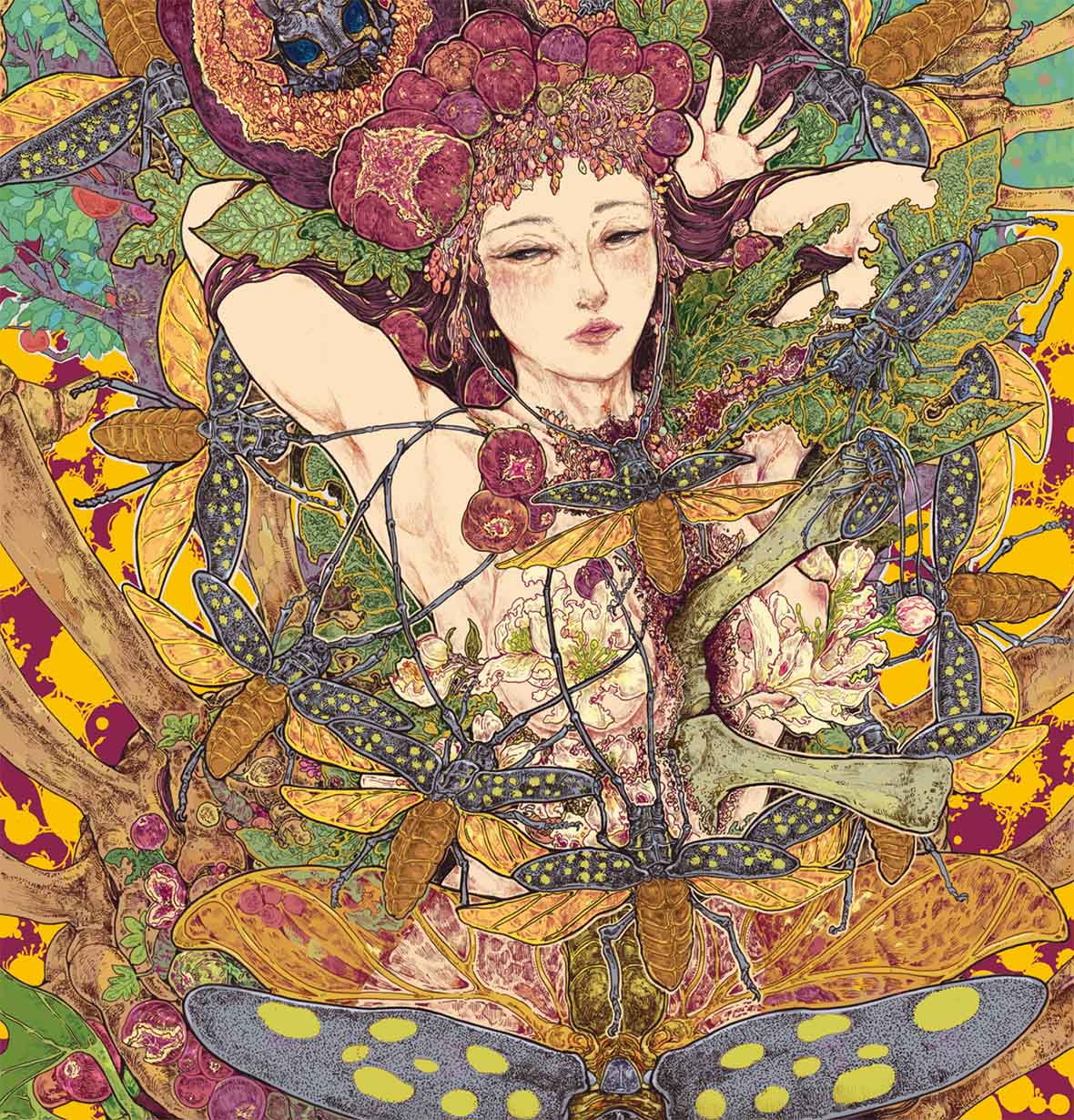
Nature is an important motif in Okuda’s work, and he shows this by insistently drawing living creatures. But he doesn’t want his paintings to show the splendor of nature alone—culture also occupies an important place. “I draw insects and living things with human beings to represent the wonders of culture and the wonders of nature,” he says.
“Insects and living creatures are an important channel through which we connect with nature. And this is an important theme,” he says. “I want people who see my pictures to be interested in nature and living things. And I also want them to have an adventure in the world inside the painting—an adventure at the intersection of culture and nature. something that’s fun.”
“以画昆虫和生物来表现自然”,这奥田一生画中的一个重要主题。然而,他并不想仅仅用绘画来表现大自然的壮美,“人文”主题也占有重要的比例。“我画昆虫和生物与人类,以表达人类的文化和大自然的奇妙。这是我的绘画的真正主题。”他说。
“昆虫和生物是连接我们与自然的一个非常重要的媒介。而人类与之结合的形式,就是我表达这一主题的方式之一。我希望看到我的照片的人对‘生物’、‘自然’感兴趣,我也希望让观众在画中的世界里有一次冒险——在人类文化与自然交融的世界冒险,并乐在其中。”
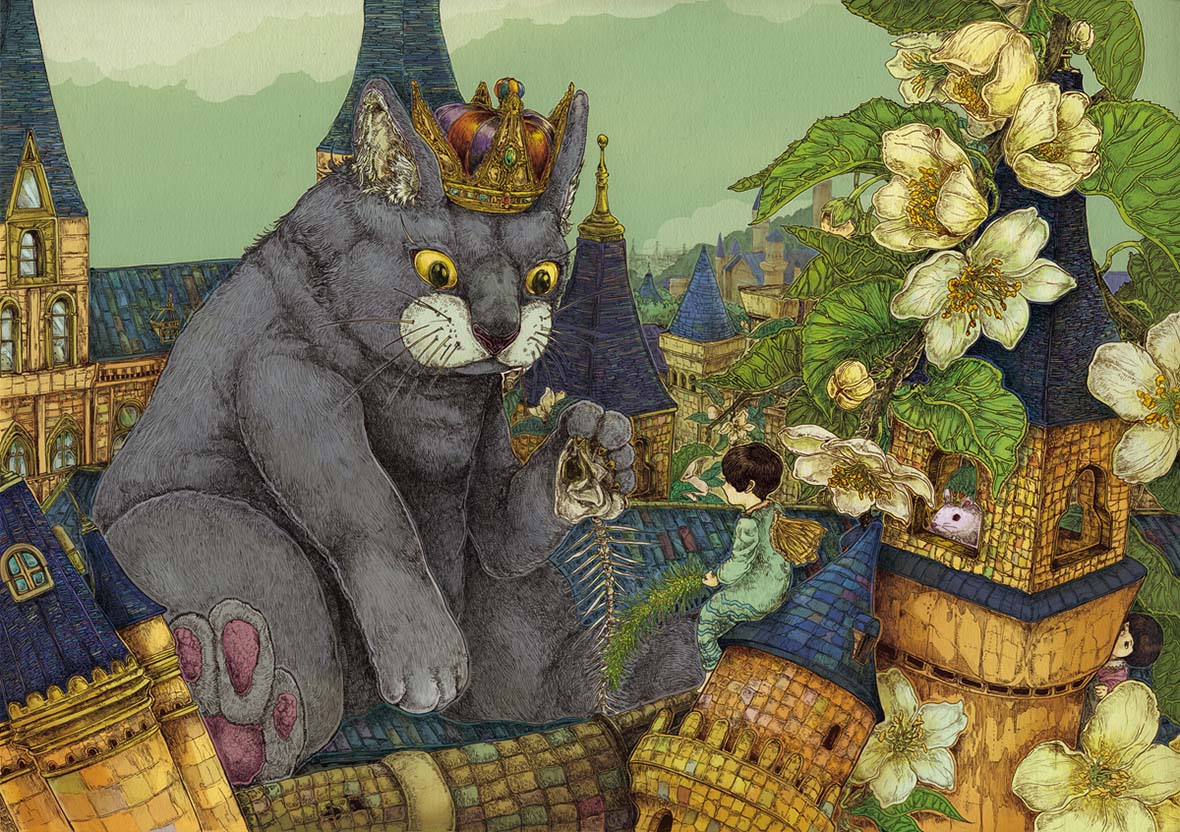
Website: isseinoissyou.michikusa.jp
Behance:~/isseitakied303
Facebook: ~/kazuki.okuda.773
Contributor: Chen Yuan
网址: isseinoissyou.michikusa.jp
Behance: ~/isseitakied303
Facebook: ~/kazuki.okuda.773
供稿人: Chen Yuan

